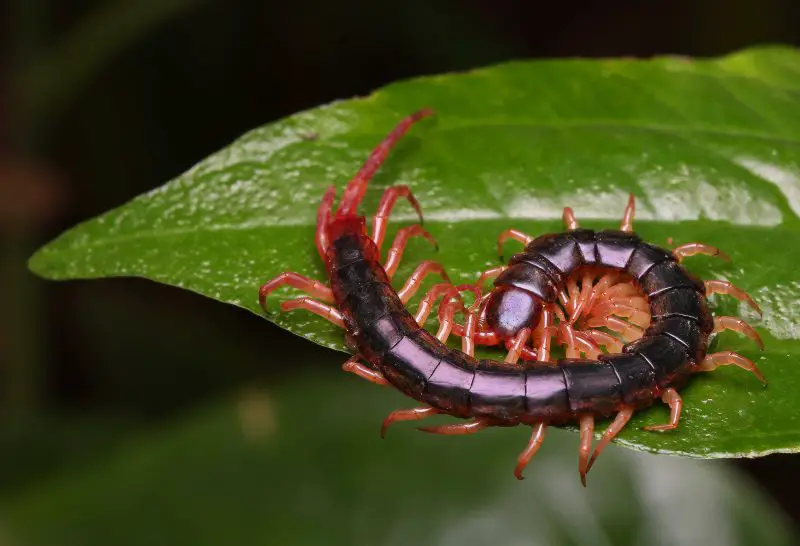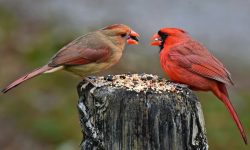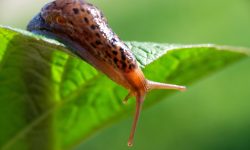Centipedes are among the most fascinating and misunderstood predators in the natural world. With their segmented bodies, swift movements and powerful venomous claws, they play an essential role in ecosystems by controlling insect populations. Understanding what centipedes eat reveals how these agile hunters survive in forests, deserts, grasslands, homes and nearly every type of habitat on Earth.
Centipedes are strict carnivores. They rely entirely on animals—mostly insects and other small creatures—to fuel their high-energy lifestyle. Their speed and sensitivity to vibrations make them efficient night hunters capable of capturing prey larger than themselves. Some species strike with lightning-fast reflexes, while others use stealth and ambush tactics to surprise their prey.
This guide explores 20 foods centipedes hunt in the wild, offering insight into their behavior, feeding strategies and ecological importance. Whether found in leaf litter, under rocks or inside dark corners of homes, centipedes maintain a powerful role as natural pest controllers.
Understanding the Centipede Diet

Centipedes are obligate carnivores, meaning their bodies require animal protein to function. Their first pair of legs has evolved into venomous forcipules—claw-like appendages that deliver venom to subdue prey. Once immobilized, the centipede uses its mandibles to tear the prey into digestible pieces. This feeding strategy allows them to consume a wide range of creatures, from tiny insects to surprisingly large invertebrates.
Their diet depends heavily on habitat and species. Smaller centipedes hunt soft-bodied organisms such as termites, mites and small insects. Larger species, like the Amazonian giant centipede, can overpower frogs, lizards and occasionally small mammals. Their adaptability makes them efficient predators in both natural and urban environments.
Centipedes hunt primarily at night to avoid predators and locate prey using their exceptional sensory ability. Their long antennae detect air movement, heat and chemical cues, making them acutely aware of nearby animals. They conserve energy by ambushing or quickly sprinting toward prey rather than chasing for long distances. This combination of stealth and speed shapes how they interact with ecosystems and maintain balance among insect populations.
20 Foods Centipedes Hunt in the Wild
1. Insects
Insects form the bulk of a centipede’s diet. They hunt beetles, ants, moths, and other small-bodied insects depending on habitat and availability. Centipedes use their forcipules to deliver venom that quickly immobilizes the insect.
In forest floors or grasslands, centipedes stalk insects among leaf litter or under logs. Their speed allows them to catch fast-moving prey before it escapes into soil or vegetation. Even in urban environments, centipedes rely partly on household insects.
These prey items provide protein and moisture that centipedes need to maintain their energy-intensive lifestyles.
2. Spiders
Spiders are common prey for centipedes, especially in places where both thrive such as basements, forest edges and rocky habitats. Centipedes often ambush spiders before they have a chance to react.
Their slender bodies allow them to slip into crevices where spiders hide. The venom of centipedes works quickly enough to prevent the spider from counterattacking with its own bite.
This relationship is important in maintaining balanced populations of both spiders and insects.
3. Ants
Ants are abundant in most ecosystems, making them a reliable food source. Centipedes hunt ants at night when ant activity slows and the risk of retaliation decreases.
Centipedes typically strike from the side or behind to avoid the ant’s defensive jaws. Some centipedes raid ant trails or capture individual ants resting in soil tunnels.
Ant-rich environments support large centipede populations due to their constant availability.
4. Termites
Termites are soft-bodied and slow-moving, making them ideal prey. Centipedes break into termite tunnels or capture individuals venturing outside their mounds.
Termites provide high protein and moisture, which benefits centipedes in dry environments. Their soft bodies are easy to consume and digest quickly.
In tropical ecosystems, termite abundance makes them one of the most consistent prey items.
5. Worms
Earthworms and small soil worms are frequently consumed by centipedes living in moist habitats. The centipede detects the worm’s movement through soil vibrations.
Once captured, the centipede injects venom and coils around the worm to prevent escape. Worms offer nutrients and are especially valuable for larger centipede species.
Their presence in leaf litter and garden soil makes them accessible prey throughout the year.
6. Crickets
Crickets are highly active insects but become vulnerable during night hours when centipedes hunt. The centipede uses rapid bursts of speed to overpower them.
Crickets provide a protein-rich meal that supports growth and reproduction. Their larger size compared to smaller insects makes them rewarding prey.
Centipedes in grasslands or forests often rely heavily on crickets during warm seasons.
7. Cockroaches
Cockroaches are common prey for larger centipedes. Their fast movements require centipedes to strike quickly and deliver venom precisely.
Urban centipedes often encounter cockroaches in dark corners, basements and moist environments. Their predation helps control cockroach populations naturally.
Because roaches are nutrient-rich, they support long-term centipede energy needs.
8. Silverfish
Silverfish thrive in damp, dark places where centipedes also live. Their soft bodies make them particularly easy for centipedes to subdue.
Centipedes often catch silverfish during nighttime runs along walls or floors. The rapid movements of silverfish are no match for a centipede’s quick strike.
This prey contributes moisture and essential nutrients.
9. Moths (Larvae or Adults)
Centipedes hunt moth larvae hiding under leaves or inside soil, and they may capture adult moths resting at night. Larvae are especially nutritious and soft-bodied.
Centipedes frequently patrol foliage or bark surfaces where moths lay eggs. They sense movement even when larvae are hidden within curled leaves.
In areas with abundant moth populations, they become a significant food source.
10. Beetle Larvae
Beetle larvae, or grubs, reside in rotting logs and soil. Centipedes pry into decaying wood to locate these slow-moving prey.
Larvae are rich in fats and protein, making them highly desirable. Larger centipedes can consume larvae nearly their own size.
These prey items help centipedes build energy stores during growth stages.
11. Flies (Adults and Larvae)
Flies are common prey for centipedes living near decaying material or around homes. Larvae, such as maggots, are soft and easy to digest.
Centipedes hide near decomposing organic matter where fly larvae thrive. Adults resting on surfaces at night also become targets.
Flies offer hydration and nutrients essential for centipede survival in drier seasons.
12. Springtails
Springtails are tiny soil-dwelling insects that serve as a primary food source for young centipedes. Adults also consume them in forest floors and compost-rich environments.
Their abundance in moist habitats makes them reliable prey year-round. Centipedes detect springtails by sensing subtle soil vibrations.
In micro-ecosystems, springtails help sustain growing juvenile centipedes.
13. Aphids
Aphids cluster on plant stems, attracting centipedes searching for small, soft-bodied prey. Their slow movement makes them easy to capture.
Centipedes may climb low vegetation or hide beneath leaves to hunt aphids at night. Aphids offer moisture that supports centipede hydration needs.
Their high population density ensures plentiful feeding opportunities.
14. Caterpillars
Caterpillars are protein-rich and slow enough for centipedes to overpower easily. Centipedes catch them on leaves, bark surfaces or the ground.
The centipede’s venom works effectively on caterpillars, preventing escape. This prey helps centipedes meet high-energy needs during reproductive seasons.
Caterpillars also contain moisture, making them vital in dry climates.
15. Small Slugs
Small slugs appear in moist regions, making them excellent prey for centipedes that prefer damp environments. Slugs move slowly, simplifying the hunt.
Centipedes grip them firmly and inject venom that immobilizes the soft body. Slugs provide rich moisture and nutrients that aid hydration.
This prey is especially important during rainy nights or humid periods.
16. Small Snails
Centipedes sometimes eat tiny snails with thin shells. They use their forcipules to puncture soft tissue or crush the shell slightly.
Snails are abundant in shaded, humid areas and offer moisture as well as minerals. Centipedes may target juvenile snails more frequently due to softer shells.
Snail availability varies seasonally but remains an important food source.
17. Small Frogs (Large Centipede Species)
Large species like the Amazonian giant centipede can overpower small frogs. They wrap their bodies around the frog while injecting potent venom.
Frogs provide a substantial meal with high protein and moisture. This behavior illustrates the impressive strength and hunting ability of large centipedes.
These predatory events occur mainly in tropical rainforests where species diversity is high.
18. Small Lizards
Some centipede species consume small lizards such as geckos. These hunts require speed and precision, as lizards move rapidly.
The centipede strikes the lizard’s body and holds tightly while venom takes effect. Lizards offer dense nutrients and energy.
This is rare and mostly limited to robust centipede species in warm climates.
19. Small Rodents (Very Large Species)
Giant centipedes in tropical regions have been documented hunting small mammals such as mice. They use their long bodies to coil around the rodent while delivering venom.
This surprising ability shows the centipede’s power and adaptability. Such meals provide enormous energy reserves.
Though rare, these hunts contribute significantly to the predator’s survival in dense tropical ecosystems.
20. Other Centipedes (Cannibalism)
Centipedes sometimes hunt each other, especially during food shortages or territorial disputes. Larger individuals overpower smaller ones easily.
Cannibalism provides a nutrient-rich meal but also reduces competition. This behavior occurs more frequently among juveniles and during overcrowding.
Although not common, it remains a natural part of centipede behavior in the wild.
FAQs About What Do Centipedes Eat
What do centipedes eat most often?
Mostly insects, spiders and other small arthropods.
Do centipedes eat plants or vegetables?
No. They are strict carnivores.
Do centipedes eat cockroaches?
Yes. Many species help reduce roach populations.
Are centipedes dangerous to humans?
Their bites can hurt but are rarely serious.
Do centipedes eat bed bugs?
Some species do, but they are not reliable control methods.
Do house centipedes eat spiders?
Yes. They often prey on spiders indoors.
How do centipedes kill prey?
With venom delivered through modified front legs called forcipules.
Do centipedes drink water?
They absorb moisture from prey and the environment.
Do young centipedes eat the same foods?
They eat smaller prey like springtails and mites.
Do centipedes help ecosystems?
Yes. They control insect populations and contribute to ecological balance.
Final Thoughts
Centipedes are efficient and adaptable hunters whose diets reflect the ecosystems they inhabit. By understanding what centipedes eat, we gain insight into their predatory behavior, ecological role and survival strategies. From insects and spiders to larger prey like frogs and small lizards, centipedes use speed, venom and precision to secure meals in both wild and urban settings. Their presence helps maintain healthy ecosystems by regulating insect populations and contributing to natural balance.






